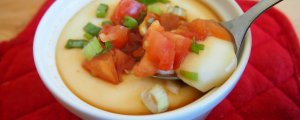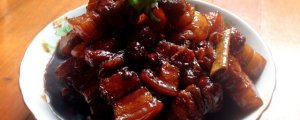
Braised Portunus
(111567 views)Some places are commonly known as white crab. Because the breastplate is shuttle shaped, it is named shuttle. Portunus ammodendron is tender and white. It is rich in protein, fat and many minerals. The shell of Portunus Portunus with good quality is brown or purple. The texture is clear and glossy. The crab yellow is solidified and does not flow. The connection between the crab foot and the body is tight. When lifting the crab body, the crab foot does not sag. On the contrary, the color of the back and ventral surface of not fresh Portunus was dark and lusterless, and there were gray brown spots and plaques in the central sulcus of the ventral surface, and even yellow granular flowing substance could be seen. The claw foot was vertical to the back.
Cooking ingredients
Cooking Steps

Step1:After the crab is cleaned, cut it into small pieces and drain the water.

Step2:Dice the onion and green pepper. Prepare the onion, ginger and garlic.

Step3:Use raw meal to thicken the portunus.

Step4:Hot oil in a cold pot. Portunus in batches. More oil than usual. When frying in batches, the pan can be tilted 45 degrees, so that all the oil can go through. (pay attention not to get water, so as to avoid oil splashing on the spot. For inexperienced friends, put more oil. Fry with the lid closed. Keep the extra oil for the next stir fry.

Step5:Fry in batches and dish for later use.

Step6:Stir fry the green pepper and onion with the remaining oil in the pot.

Step7:Stir fry the portunus in the pot. Add onion, ginger and garlic. Continue to stir fry. Add salt, soy sauce, cooking wine and stir fry again. (you can also put some old styles on

Step8:Add water to the raw meal and turn it into water starch. Pour it into the pot and stir evenly. Cover the pot and stew.

Step9:When the soup is dry, start the pot and put it on the plate.
Cooking tips:When the water lake powder is put into the pot, stir fry it and pour it in at the same time, so as to prevent the temperature of the pot from being too high and caking. There are skills in making delicious dishes.
 Chinese Food
Chinese Food












